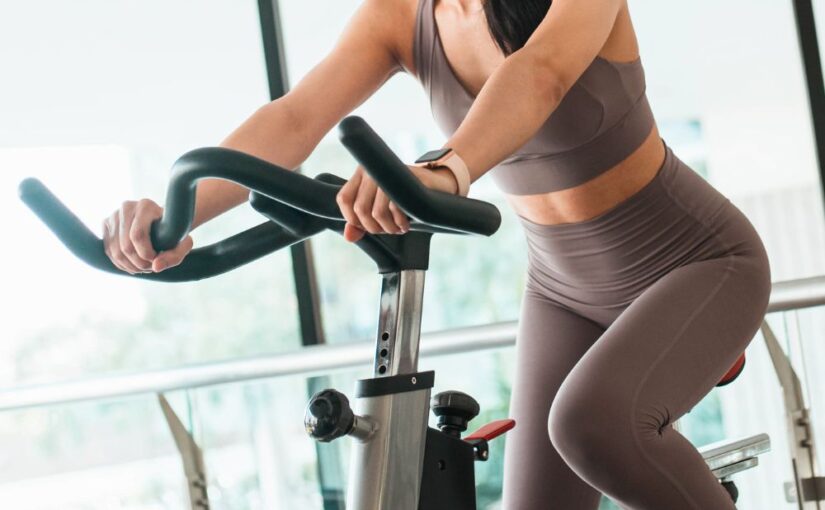When it comes to weight loss, many people think that high-intensity workouts are the only way to shed pounds. However, low intensity cardio for weight loss is an effective and sustainable approach, especially for those who prefer working out at home. These exercises are gentle on the joints, easy to maintain, and still produce significant results. Whether you’re just starting your fitness journey or prefer a gentler approach, low-intensity cardio is an effective way to lose weight at home.
What is Low-Intensity Cardio?
Low-intensity cardio is aerobic exercise that raises your heart rate but does not push it into the high-intensity zone. These exercises are typically performed at a moderate pace, allowing you to talk comfortably without getting out of breath. Examples include walking, cycling, and swimming or using a stationary bike. While it may not burn calories as quickly as high-intensity workouts, it’s easier to sustain over time and can be incredibly effective in the long run.
Benefits of Low-Intensity Cardio for Weight Loss
Sustained Fat Burning
Low-intensity cardio allows you to work out longer without exhausting yourself. This sustained effort helps promote fat loss as your body uses stored fat for energy. When done consistently, low-intensity exercises contribute significantly to weight loss over time.
Joint-Friendly Exercise
Compared to high-impact exercises like running or jumping, low-intensity cardio is much easier on the joints. This makes it ideal for those with joint concerns or those new to exercise. It also reduces the risk of injury, which is crucial for long-term fitness and regular exercise.
Mental and Emotional Benefits
Low-intensity workouts benefit your mind as well. Since these exercises are less stressful, they are easier to integrate into your routine. This consistency creates a positive mental association with fitness, which is key for long-term weight loss success.
Best Low-Intensity Cardio Exercises for Weight Loss You Can Do at Home
If you’re ready to add low-intensity cardio to your home workout routine, here are a few exercises you can try:
Walking (Including Treadmill Walking)
Walking is an easy low-intensity cardio exercise that can be done both indoors and outdoors, requiring only a comfortable pair of shoes. A treadmill lets you maintain a steady pace, regardless of the weather, making it an ideal indoor option. You can also adjust the incline to target different muscle groups while keeping the workout low-impact.
Stationary Cycling
Cycling is another great low-intensity workout for home. A stationary bike provides a steady workout that keeps your heart rate in the fat-burning zone. It’s gentle on the knees and joints, and you can adjust the resistance for a more customized workout, building endurance over time.
Steady-State Elliptical
If you have an elliptical machine at home, you can use it for low-intensity cardio. Set the resistance to a manageable level and keep a consistent, steady rhythm throughout your workout. The elliptical engages both your upper and lower body, offering a full-body workout that’s easier on the joints compared to high-impact activities like running.
Swimming
If you have access to a pool, swimming is an excellent choice for low-intensity cardio. The water provides natural resistance, offering a full-body workout that’s easy on the joints. Swimming is a soothing yet efficient way to burn calories and tone muscles.
Yoga or Pilates
While not traditionally cardio, certain styles of yoga and Pilates can elevate your heart rate enough to count as low-intensity cardio. These exercises improve flexibility, balance, and core strength, while also providing cardiovascular benefits when done consistently.
How to Add Low-Intensity Cardio to Your Routine
To effectively lose weight with low-intensity cardio, aim for at least 30 minutes per session, several times a week. Here’s how to structure your routine:
- Start slow: If you’re new to exercise, start with shorter sessions (10-15 minutes) and gradually build up to 30-60 minutes.
- Be consistent: Consistency is key to successful weight loss. Strive for 3 to 5 low-intensity cardio sessions weekly.
- Combine with strength training: To maximize your results, pair low-intensity cardio with strength training exercises. This combination helps build muscle, boosts metabolism, and accelerates weight loss.
TL;DR: Low-intensity cardio is a simple, joint-friendly, and sustainable way to lose weight—ideal for beginners and home workouts. Exercises like walking, cycling, swimming, and using an elliptical can help burn fat effectively over time without the stress of high-impact movements. These workouts are easier to maintain, making consistency more achievable, which is key to long-term weight loss. Aim for at least 30 minutes of activity, 3 to 5 times a week, and consider combining cardio with strength training for optimal results.
Conclusion
Incorporating low-intensity cardio into your fitness routine is a smart and sustainable way to shed pounds, especially when working out at home. Whether it’s walking, cycling, swimming, or using an elliptical, low-intensity cardio helps you achieve your weight loss goals while being gentle on your joints. With consistency, you’ll not only burn fat but also improve your cardiovascular health, boost your energy levels, and enhance your overall well-being.
Remember, the key to successful weight loss is consistency—so choose exercises you enjoy and make them a regular part of your lifestyle!
Frequently Asked Questions (FAQ)
Low intensity cardio involves steady, moderate movements that elevate your heart rate without pushing you to exhaustion. Examples include walking, gentle cycling, swimming, or using an elliptical at a steady pace.
Yes, you can lose weight with low intensity cardio, especially when paired with a balanced diet and done consistently. While the calorie burn may be slower than high-intensity workouts, it’s sustainable and easier on the body over time.
Try to get in 30 to 60 minutes of low intensity cardio, three to five times a week. Staying consistent is essential for steady and lasting weight loss.
Absolutely! It’s an excellent starting point for those new to fitness or returning after a break, as it’s gentle on the joints and easy to maintain without overwhelming the body.
Yes, combining it with strength training can help build muscle, improve metabolism, and enhance overall results. This balanced approach supports both fat loss and fitness.
Recommended Home Cardio Equipment
If you’re looking to build a low-intensity cardio routine at home, having the right equipment can make your workouts more convenient and enjoyable. Below are a few options that support consistent, joint-friendly exercise.
Treadmills
Treadmills are a versatile option for walking workouts at home. Many models come with adjustable speed and incline settings, allowing you to vary intensity while staying low impact. Ideal for all fitness levels, especially those who enjoy indoor walking regardless of the weather.
Stationary Bikes
Stationary bikes provide a solid cardio workout that’s easy on the joints. They’re great for maintaining a steady pace, and many come with features like resistance settings, pre-programmed workouts, and heart rate monitors for a more tailored experience.
Recumbent Bikes
Recumbent bikes are similar to upright stationary bikes but offer additional back support and a reclined seating position. This makes them especially comfortable for beginners or individuals with mobility or joint issues. They allow you to cycle in a relaxed posture while still working on endurance and calorie burn.
Ellipticals
Elliptical machines provide a total-body workout by involving both your arms and legs during exercise. They mimic the motion of walking or running but with less strain on the joints, making them a smart option for anyone seeking an effective low-intensity cardio session without the impact.
Affiliate Disclosure
The above links are affiliate links. If you click on one of these links and make a purchase, we may earn a small commission at no extra cost to you.

